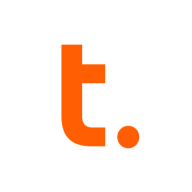

Teradata and Amazon Aurora compete in the data management and analytics category. Amazon Aurora has the upper hand due to its seamless integration with AWS, cost-effectiveness, and managed service offerings.
Features: Teradata's features include massive parallel processing, robust tools for data mining, and advanced security features. It effectively handles intricate queries, making it suitable for large-scale analytics across cloud and on-premise deployments. Amazon Aurora offers seamless AWS integration, high performance with low latency replication, and auto-scaling storage. Its managed environment reduces administrative efforts, making it a preferred choice for developers.
Room for Improvement: Teradata needs to enhance SQL functionality, improve cloud compatibility, and offer more cost-effective scaling solutions. It faces challenges in on-premise scalability and unstructured data handling. Aurora requires improvements in MySQL compatibility, query processing, and pricing structure. Better ease of migration and increased developer support are also necessary for Aurora.
Ease of Deployment and Customer Service: Teradata offers various deployment models but could improve its responsiveness to support queries. It provides solid tech support but needs to quicken response times. Aurora, with strong AWS integration, excels in public cloud deployments and customer service, ensuring swift issue resolution and high user satisfaction.
Pricing and ROI: Teradata has high pricing due to its advanced analytics capabilities, offering good ROI for large, complex data projects. However, its cost is a barrier for smaller companies. Aurora is cost-effective, lacking licensing fees and providing excellent performance. Its managed services offer a strong ROI, appealing to firms seeking seamless AWS integration.
Using Amazon Aurora has saved us significantly in terms of manpower costs, with nearly fifty percent savings compared to an on-premises solution.
Technical support from Amazon is rated very highly.
The initial support could improve by having engineers familiarize themselves with the issue content to provide more specialized assistance from the start.
The technical support from Teradata is quite advanced.
Customer support is very good, rated eight out of ten under our essential agreement.
This scalability is critical as it allows for runtime expansion, which is essential for businesses moving from on-premises to the cloud.
This expansion can occur without incurring downtime or taking systems offline.
Scalability is complex as you need to purchase a license and coordinate with Teradata for additional disk space and CPU.
It offers a stable environment, ensuring consistent performance.
I find the stability to be almost a ten out of ten.
The workload management and software maturity provide a reliable system.
There are technical challenges, such as the inability to provision the database using a PostgreSQL snapshot directly.
Keeping extensions up-to-date with PostgreSQL releases would enhance Aurora's functionality.
Unlike SQL and Oracle, which have in-built replication capabilities, we don't have similar functionality with Teradata.
The pricing is reasonable and not overly expensive.
Amazon Aurora is not very expensive as other solutions with similar features from other vendors come at almost the same cost.
Initially, it may seem expensive compared to similar cloud databases, however, it offers significant value in performance, stability, and overall output once in use.
Teradata is much more expensive than SQL, which is well-performed and cheaper.
Amazon Aurora offers a 99.9% SLA compared to PostgreSQL. This ensures a high level of availability for our applications.
It replicates data across multiple Availability Zones, ensuring high availability and geographical redundancy, which can be considered a GR instead of a DR.
The data mover is valuable over the last two years as it allows us to achieve data replication to our disaster recovery systems.


Amazon Aurora is a MySQL and PostgreSQL-compatible relational database built for the cloud, that combines the performance and availability of traditional enterprise databases with the simplicity and cost-effectiveness of open source databases.
Amazon Aurora is up to five times faster than standard MySQL databases and three times faster than standard PostgreSQL databases. It provides the security, availability, and reliability of commercial databases at 1/10th the cost. Amazon Aurora is fully managed by Amazon Relational Database Service (RDS), which automates time-consuming administration tasks like hardware provisioning, database setup, patching, and backups.
Amazon Aurora features a distributed, fault-tolerant, self-healing storage system that auto-scales up to 64TB per database instance. It delivers high performance and availability with up to 15 low-latency read replicas, point-in-time recovery, continuous backup to Amazon S3, and replication across three Availability Zones (AZs).
Visit the Amazon RDS Management Console to create your first Aurora database instance and start migrating your MySQL and PostgreSQL databases.
Teradata is a scalable data analytics platform designed to meet enterprise demands for large-scale data management and processing, focusing on performance, scalability, and security for complex query executions.
As a leading data warehousing solution, Teradata integrates advanced analytics enabling organizations to derive insights from massive datasets. It supports high-volume data workloads with its architecture optimized for analytical queries. Users benefit from its robust scalability, allowing seamless expansion as data grows. Teradata's SQL engine is compatible with a wide range of data types, ensuring flexibility in data analysis. With advanced security measures, it protects sensitive data across various environments, providing peace of mind to users handling critical information.
What are the most important features of Teradata?Teradata is widely used in industries like finance, telecommunications, and healthcare, where data-driven decisions are critical. Companies leverage its robust analytics capabilities to enhance customer experiences, streamline operations, and ensure compliance with regulatory requirements. In these sectors, quick access to data insights can significantly impact competitive advantage.
We monitor all Relational Databases Tools reviews to prevent fraudulent reviews and keep review quality high. We do not post reviews by company employees or direct competitors. We validate each review for authenticity via cross-reference with LinkedIn, and personal follow-up with the reviewer when necessary.